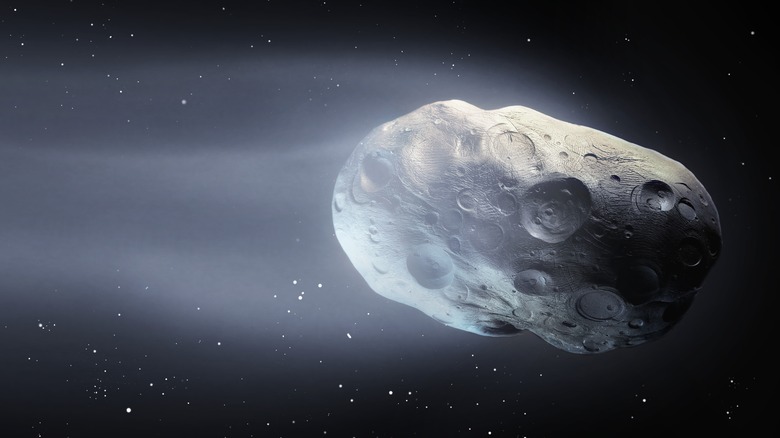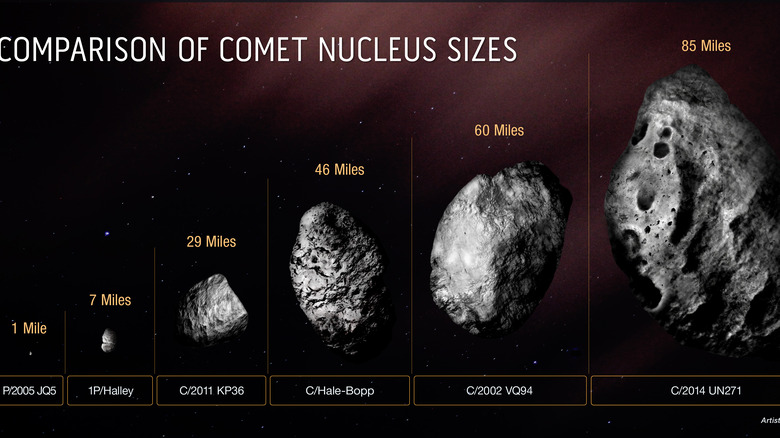Hubble Just Made A Massive Comet Discovery
The Hubble Space Telescope is used to study all sorts of astronomical objects, from distant galaxies to strange exoplanets, and sometimes even planets here in our solar system. But its latest discovery isn't related to a star, a galaxy, or a planet: instead, it's a comet. And not just any comet – it has spotted the largest icy comet nucleus seen to date, according to the official Hubble website.
Comets are icy bodies passing through space that orbit around the sun. When they come close to the sun and heat up, they release gases that give them a distinctive tail. They are useful for astronomers to study as they are some of the oldest known objects in the solar system, so looking at them can reveal clues about how the planets form. Many of the comets in our solar system reside in an area called the Oort Cloud, far beyond the orbit of Neptune.
Observations from Hubble of this particular specimen were able to confirm that this is no ordinary comet, as it measures a whopping 80 miles across, far larger than the previous largest comet, which was 60 miles across.
"This comet is literally the tip of the iceberg for many thousands of comets that are too faint to see in the more distant parts of the solar system," said one of the researchers, David Jewitt of the University of California, Los Angeles. "We've always suspected this comet had to be big because it is so bright at such a large distance. Now we confirm it is."
How to measure a comet
The particular comet in question, named C/2014 UN271, was first observed back in 2010. It was unusually bright, so it caught astronomers' attention, but it was also extremely far away at 3 billion miles from the sun. The celestial body is heading toward us but even now, more than a decade later, it is still 2 billion miles from the sun.
The challenge with measuring comets is that they have a shell of dust that surrounds their solid icy core, or nucleus, which makes it hard to see. Ground-based telescopes observed the comet in addition to space-based telescopes like Hubble, though Hubble couldn't see the comet's nucleus specifically because it is so far away. The researchers used the Hubble images, along with radio observations, to compare with computer models of what size it would have to be to glow in that way. They found that given its size, the comet must weigh a mighty 500 trillion tons, which is a hundred thousand times more than a typical comet weighs.
This icy beast is bearing down on us at a speed of 22,000 miles per hour, but the good news is that it's no threat to us as it won't come any closer to the sun than the orbit of Saturn. But studying it can help astronomers learn more about its smaller brethren.
"This is an amazing object, given how active it is when it's still so far from the Sun," said lead researcher Man-To Hui of the Macau University of Science and Technology, Taipa, Macau. "We guessed the comet might be pretty big, but we needed the best data to confirm this."

